Hwangnam Bread (황남빵)
1.4 Km 2 2023-07-12
783 , Taejong-ro, Gyeongju-si, Gyeongsangbuk-do
When Hwangnam Bread was created in Hwangnam-dong, Gyeongju, in 1939, people began to refer to it as “the bread from Hwangnam.” Over time, the name stuck. The late Choi Yeong-hwa, the founder of Hwangnam Bread, was a scion of the Gyeongju Choi family who came up with this masterpiece when he was 21 years old after much trial and error. Mr. Choi’s creation is based on the tradition of rice cakes and bread made with sweet red beans, passed down throughout the generations in his family. Even today, 80 years after the creation of the bread, it is only flavored with red beans. Another defining feature of Hwangnam Bread is the delicate comb pattern inspired by the aesthetics of the Silla period.
Bitgguri (빛꾸리)
1.4 Km 1 2023-07-12
16-1 , Sonhyoja-gil, Gyeongju-si, Gyeongsangbuk-do
+82-54-777-4421
This cafe is located in a small alley near Cheonmachong Tomb (Daereungwon Ancient Tombs), in a renovated old hanok and yard. This place's seating is on the floor, so the traditional atmosphere comes alive. Bitgguri’s signature menu items are grilled saekdong injeolmi (bean-powder-coated rice cake) and tangerine ginger tea. Dig into the colorful rice cakes, grilled and coated with powdered soybeans, and traditional tea to fully enjoy the classic charms of Gyeongju. The rice cake is enjoyed together with a malt syrup called jocheong, a traditional substitute for honey. Tangerine ginger tea is a traditional tea made with tangerine and ginger. It is quite effective for colds and is full of natural vitamins, so one can feel healthy just by drinking the beverage. The café has a garden decorated with traditional earthenware pots and stone fences topped with tiles, allowing one to enjoy a charming view along with the dessserts. The cafe also hosts one-day classes, such as bojagi (square clothes made to be wrapped around items for transportation) making.
Gyeongju Hwangnidan Street (경주 황리단길)
1.5 Km 0 2023-07-10
1080, Poseok-ro, Gyeongju-si, Gyeongsangbuk-do
Hwangnidan Street was originally known as “Hwangnam Keungil” near Poseok-ro, Hwangnam-dong. Its name comes from the combination of Hwangnam-dong and Gyeongnidan Street in Itaewon, Seoul, meaning the “Gyeongnidan Street of Hwangnam-dong.” The street is home to numerous restaurants, cafes, photo studios, and shops housed in traditional hanok buildings, making it popular among the younger generations in Korea. The street also demonstrates newtro aesthetics due to the remaining old and worn buildings built during the 1960s and the '70s. Hwangnidan Street is near Cheomseongdae Observatory, Daereungwon Ancient Tombs, and other major tourist sites, allowing the street to become a popular Gyeongju attraction as well.
Cheonmachong Tomb (Daereungwon Ancient Tombs) (천마총 (대릉원))
1.5 Km 110909 2023-07-14
9, Gyerim-ro, Gyeongju-si, Gyeongsangbuk-do
+82-54-743-1925
Daereungwon Ancient Tombs are one of the most well-known sights in Gyeongju, a history park home to 23 small and large ancient tombs. The area is dotted with tranquil trails among the tombs like the largest tomb in Hwangnam-dong, Hwangnamdaechong Tomb; Cheonmachong Tomb, the place where Cheonmado, a saddle flap painting, was excavated from; and the tomb of King Michu, nicknamed the “Tomb of the Bamboo Warrior.”
Cheonmachong Tomb, excavated in 1973, has a x_height of 12.7 meters and a diameter of 50 meters. Its excavation unearthed many artifacts, such as the famous Gold Crown from Cheonmachong Tomb. Its name comes from Cheonmado, a mudguard saddle flap with a painting of a heavenly horse. Cheonmachong Tomb is the only tomb in the Daereungwon Ancient Tombs to be opened to the public.
The tomb is thought to have been constructed between the late 5th century and early 6th century. Artifacts excavated from the tomb include a gold crown, gold cap, gold waist belt, gold diadem, and gilt-bronze shoes worn by the buried. The gold crown, in particular, is known as the largest and the most elaborate of all gold crowns unearthed in Korea. The artifacts themselves can be found in Gyeongju National Museum, so don’t miss the chance to see them in person.
Another must-visit site is the Daereungwon Magnolia Photo Area, a lone magnolia tree standing between the beautiful curves of ancient tombs.
Gyeongju Hanbokpan (경주한복판)
1.5 Km 0 2024-04-08
1077-2 Poseok-ro, Gyeongju-si, Gyeongsangbuk-do
Gyeongju Hanbokpan is a hanbok rental store located in the middle of Hwangnidan Street. Hanbok attires are available in a variety of materials, colors, and seasons. There are many hanbok wears reflecting the latest trends, so they look good on anyone and are easy to wear. Besides changing clothes, the store owner also assists customers with hair accessories. There are many family customers as the store also offers hanbok for both men and children. Customers can also print the photos they took with their smartphone upon retrning the hanbok, making it an even more memorable experience.
Gyeongju Daereungwon Ancient Tomb Complex (경주 대릉원 일원)
1.5 Km 13734 2022-12-26
9, Gyerim-ro, Gyeonju-si, Gyeongsangbuk-do
+82-54-750-8650
Gyeongju Daereungwon Tomb Complex consists of five tombs, Ancient Tombs of Gyeongju Nodong-ri, Noseo-ri, Hwangnam-ri, Hwango-ri, and Inwang-ri. The tombs are distributed in Hwangnam-dong, Gyeongju-si, and are located in the Daereungwon area. Within Daereungwon Tomb Complex is Cheonmachong Tomb, which was excavated in 1973. Furthermore, Hwangnamdaechong Tomb was excavated between 1973 and 1975, and is a set of twin tombs belonging to a presumed married couple.
Gyeongju Ssambap Street (경주 쌈밥거리)
1.5 Km 0 2024-02-08
9 Gyerim-ro, Gyeongju-si, Gyeongsangbuk-do
Gyeongju Ssambap Street, developed around the Daereungwon Ancient Tombs in Gyeongju, offers a diverse culinary experience. A highlight is ssambap (leaf wraps and rice), a dish featuring fresh vegetables accompanied by substantial side dishes like fish, meat, and doenjang jjigae (soybean paste jjigae) made from homemade soybean paste. Additionally, this street presents a variety of snacks, including Hwangnam ppang (Hwangnam bread) prepared with red beans and flour, and jjondeugi, a traditional chewy snack made from cornmeal and sugar. Nearby attractions include the Cheomseongdae Observatory, Donggung Palace and Wolji Pond, Woljeonggyo Bridge, and the Gyeongju National Museum.
KELIMGUNG [Korea Quality] / 계림궁 [한국관광 품질인증]
1.5 Km 14099 2020-09-09
932, Poseok-ro, Gyeongju-si, Gyeongsangbuk-do
+82-10-2705-8121
According to a Korean myth, Gyerim Forest in Banwolseong Fortress, Gyeongju is the birthplace of Silla Kingdom founder Kim Alji (of Gyeongju Kim’s Clan) about two thousand years ago. Gyerimgung Hanok Pension is located 2 kilometers from Banwolseong Fortress and is named after the forest. Inside the gate are guestrooms named “Yoseok Room” with a large window in the detached building, “Sirim Room” and “Alji Room” in the main building, and “Asadal Room” and “Asanyeo Room” right next to it. The guesthouse has a shared kitchen and two “wondumak” (a Korean lookout hut on stilts usually in a melon field for guests to use). Barbecue facilities are also available upon reservation. The guesthouse offers a number of fun traditional programs including “Starting a Fire for Traditional Korean Iron Pot,” “Neolttwigi,” and “Yunnori.” Gyeongju Oreung in the vicinity of the guesthouse is a great place to take a walk. Nearby popular tourist destinations include Banwolseong Fortress, Cheomseongdae Observatory, and Daereungwon Tomb Complex. The guesthouse can be a great choice for those looking for a quiet place to stay overnight because it's situated in a residential area slightly off the main tourist zone.
Daereungmyojji (대릉묘찌)
1.5 Km 0 2024-04-08
1085 Poseok-ro, Gyeongju-si, Gyeongsangbuk-do
Try the unique combination of beaded ice cream and sweet rice cake, a traditional Korean dessert, at Daereungmyojji on Hwangridan Street near Daereungwon Ancient Tombs. The business offers take-out only, and there are no seats. Three menus are available: mugwort flavor sweet rice cake with pea filling, chocolate flavor sweet rice cake with filling made with Belgian dark chocolate, and sweet rice cake with red bean filling and crispy walnuts. Each serving of sweet rice cakes is cut into three or four pieces and served in a cup. In addition to being a unique dessert, the packaging has a cute rabbit drawing on it. The gift set contains eight pieces, perfect for people who want to enjoy a lot of desserts.
Artbox - Gyeongju Branch [Tax Refund Shop] (아트박스 경주)
1.5 Km 0 2024-04-18
89, Gyerim-ro, Gyeongju-si, Gyeongsangbuk-do
-
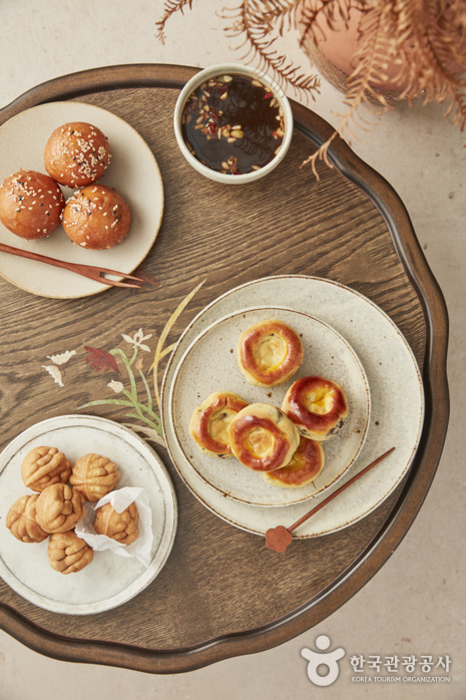
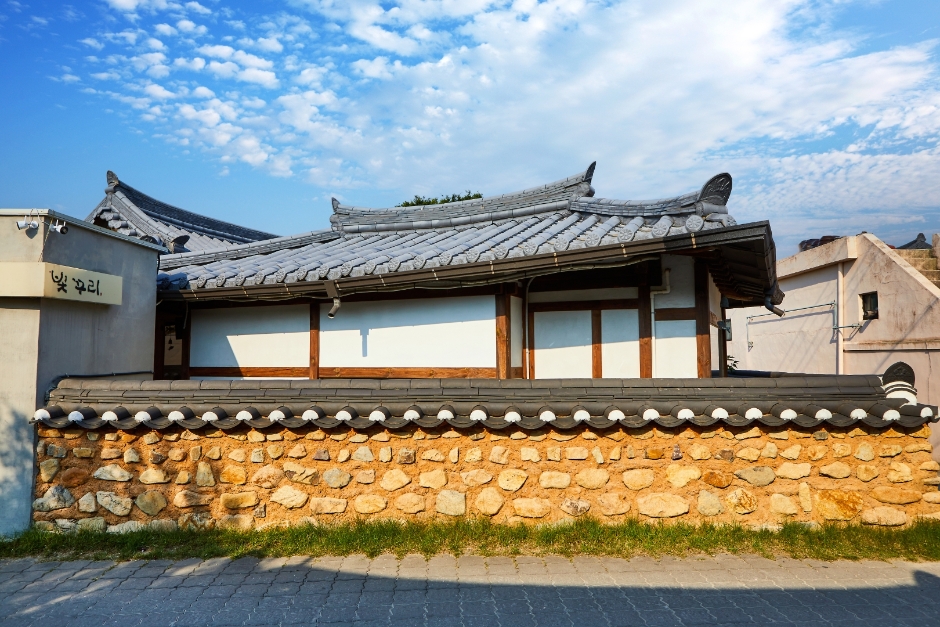

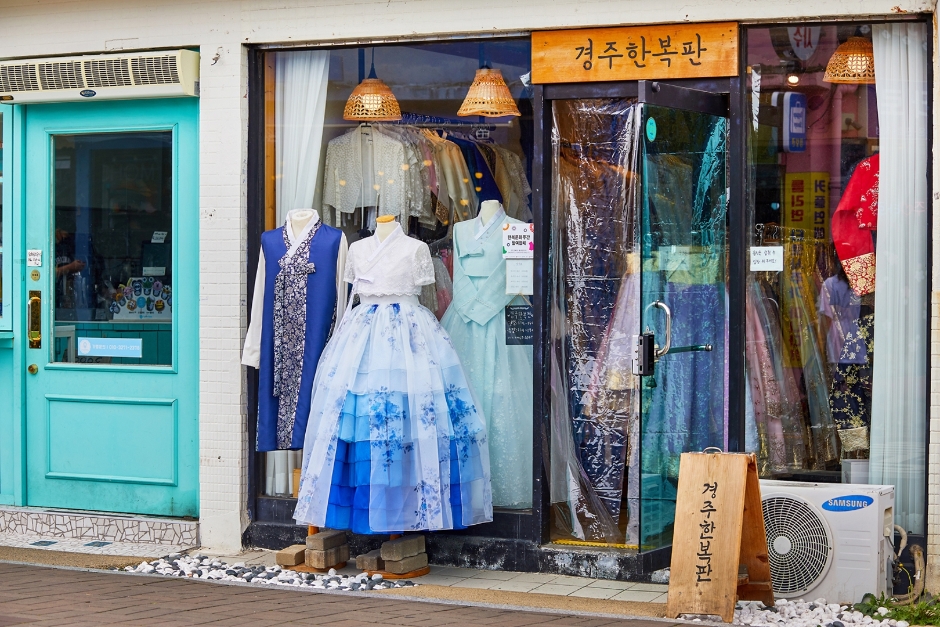
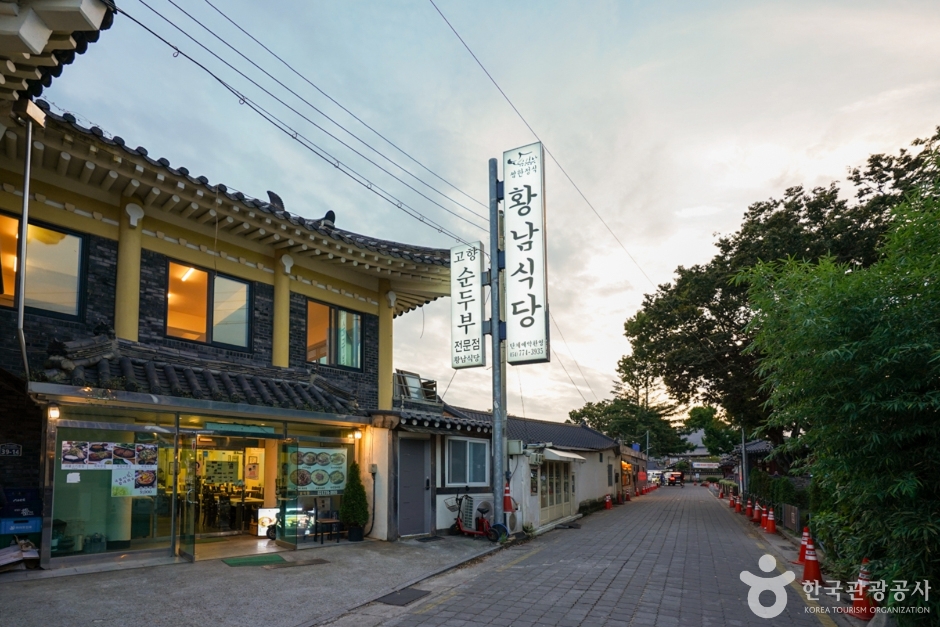
![KELIMGUNG [Korea Quality] / 계림궁 [한국관광 품질인증]](http://tong.visitkorea.or.kr/cms/resource/67/2543967_image2_1.jpg)
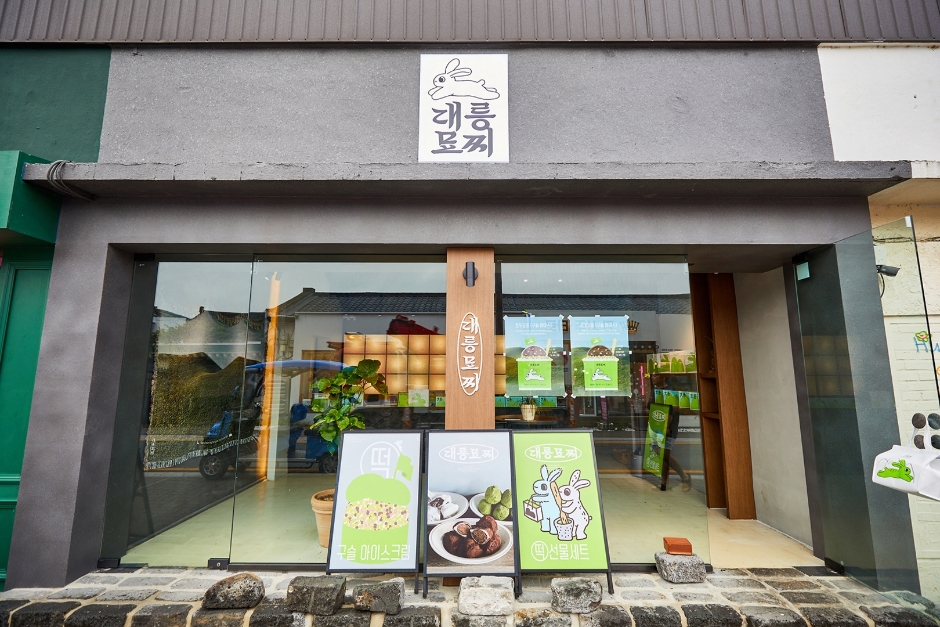
![Artbox - Gyeongju Branch [Tax Refund Shop] (아트박스 경주)](http://tong.visitkorea.or.kr/cms/resource/43/2883743_image2_1.jpg)
 English
English
 한국어
한국어 日本語
日本語 中文(简体)
中文(简体) Deutsch
Deutsch Français
Français Español
Español Русский
Русский